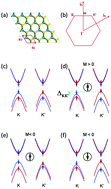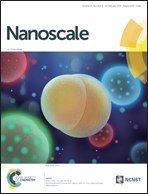Valley splitting in the transition-metal dichalcogenide monolayer via atom adsorption
Abstract
In this letter we study the valley degeneracy splitting of the transition-metal dichalcogenide monolayer by first-principles calculations. The local magnetic moments are introduced into the system when the transition-metal atoms are adsorbed on the monolayer surface. The Zeeman effect arising from the local magnetic moment at transition-metal atom sites lifts the valley degeneracy. Anomalous charge, spin and valley Hall effects can be accessed due to valley splitting when we can only excite carriers of one valley. The valley splitting depends on the direction of magnetization and thus can be tuned continuously by an external magnetic field. This tunable valley splitting offers a practical avenue for exploring device paradigms based on the spin and valley degrees of freedom.

- This article is part of the themed collection: 2017 Nanoscale HOT Article Collection


 Please wait while we load your content...
Please wait while we load your content...